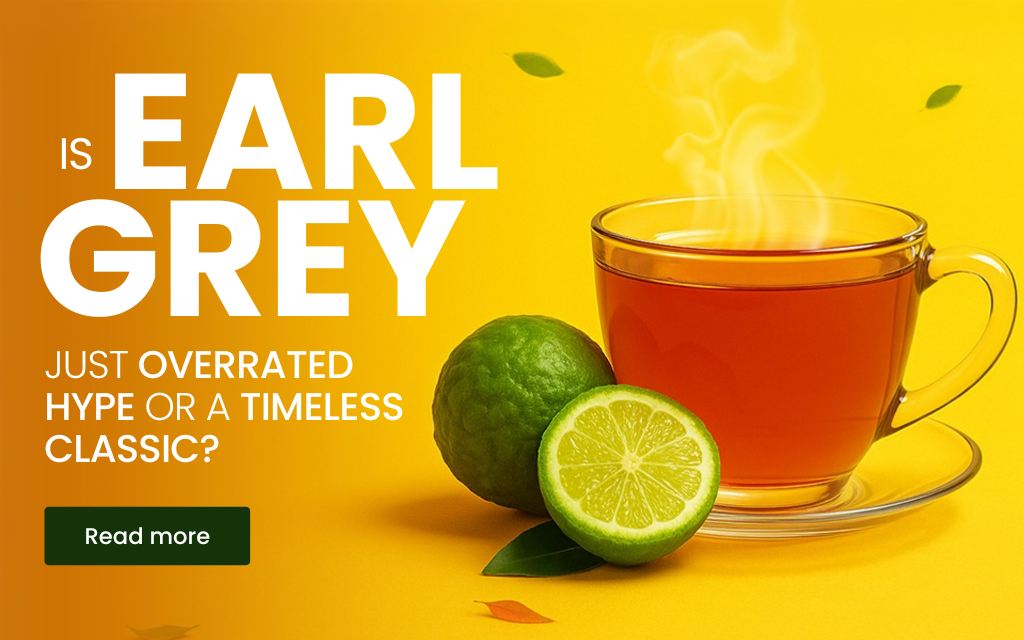
Is Earl Grey Just Overrated Hype or a Timeless Classic?
Earl Grey tea—instantly recognizable by its fragrant bergamot aroma—has graced afternoon tables and gourmet cafés for centuries. But amid today’s dizzying array of specialty beverages, one question arises: Is Earl Grey merely an overrated fad, or does it truly deserve its status as a timeless classic? Let’s steep ourselves in its story, flavor, and enduring appeal to find out.
A Brief History of the “Prince of Teas”
Legend credits the tea’s origin to a gift from China to Britain’s 2nd Earl Grey in the early 1800s. Whether the tale is fact or folklore, the genius lies in blending tea leaves with oil from the bergamot orange peel—an aromatic citrus first cultivated in southern Italy. This innovation captured imaginations, and by the Victorian era, Earl Grey had become synonymous with elegance and refinement.
Flavor Profile: More Than Just Citrus
At its heart, Earl Grey is black or green tea scented with natural bergamot oil. The result is a bright, floral‑citrus bouquet layered over the base tea’s malt or vegetal notes. When brewed:
-
Darjeeling Black Earl Grey reveals a light muscatel sweetness beneath the zesty bergamot.
-
Darjeeling Green Earl Grey pairs grassy, vegetal tones with a citrus lift, offering a softer, more refreshing cup.
Golden Tips Tea honors this tradition, presenting both designer Darjeeling Black Earl Grey and Darjeeling Green Earl Grey blends that use the ripest bergamot oil for an authentic, complex flavor.
The Case for “Overrated Hype”
-
Mass‑Market Variants: Many commercial blends use artificial flavorings and low‑grade teas, leading to one‑dimensional, overly perfumed cups.
-
Citrus Overkill: Some drinkers find the bergamot note too strong, masking the subtleties of the tea leaf itself.
-
Trend‑Driven Ordering: In coffee shops, Earl Grey’s Instagram appeal can feel more about aesthetics than genuine appreciation.
If you’ve endured a flat, synthetic‑smelling cup, it’s easy to dismiss Earl Grey as a trendy “pumpkin spice” of the tea world.
The Case for “Timeless Classic”
-
Century‑Long Popularity: Despite ever‑changing beverage trends, Earl Grey has remained a mainstay—proof of its broad, enduring appeal.
-
Versatility: Enjoy it hot, iced, or as a sophisticated base for lattes and cocktails. Each preparation unearths different facets of its flavor.
-
Proven Benefits: Like other true teas, Earl Grey delivers antioxidants and gentle caffeine, offering alertness without the jitters. Bergamot itself is studied for its potential cholesterol‑lowering and stress‑reducing effects.
-
Artisanal Quality: Premium blends—like Golden Tips’ Darjeeling-based versions—use hand‑picked leaves and natural bergamot oil, creating a nuanced cup worthy of its reputation.
Brewing the Perfect Cup
To appreciate Earl Grey at its best:
-
Water Temperature:90–95 °C for black, 80 °C for green.
-
Steeping Time: 3–4 minutes—long enough for aroma to bloom, short enough to avoid bitterness.
-
No Add‑Ins (First Try): Savor the pure floral‑citrus notes. Later, experiment with a slice of lemon, a dash of honey, or a splash of milk.
Conclusion: Classic Wins the Day
While lower‑quality, artificially flavored versions may leave a flat impression, Earl Grey’s true heritage and complex flavor make it anything but overrated. Its centuries‑long popularity, versatility, and genuine health perks cement its place as a timeless classic.
Ready to taste the difference? Explore Golden Tips Tea’s Darjeeling Black Earl Grey and Darjeeling Green Earl Grey blends—crafted with the finest leaves and natural bergamot oil—for a truly authentic experience.


























